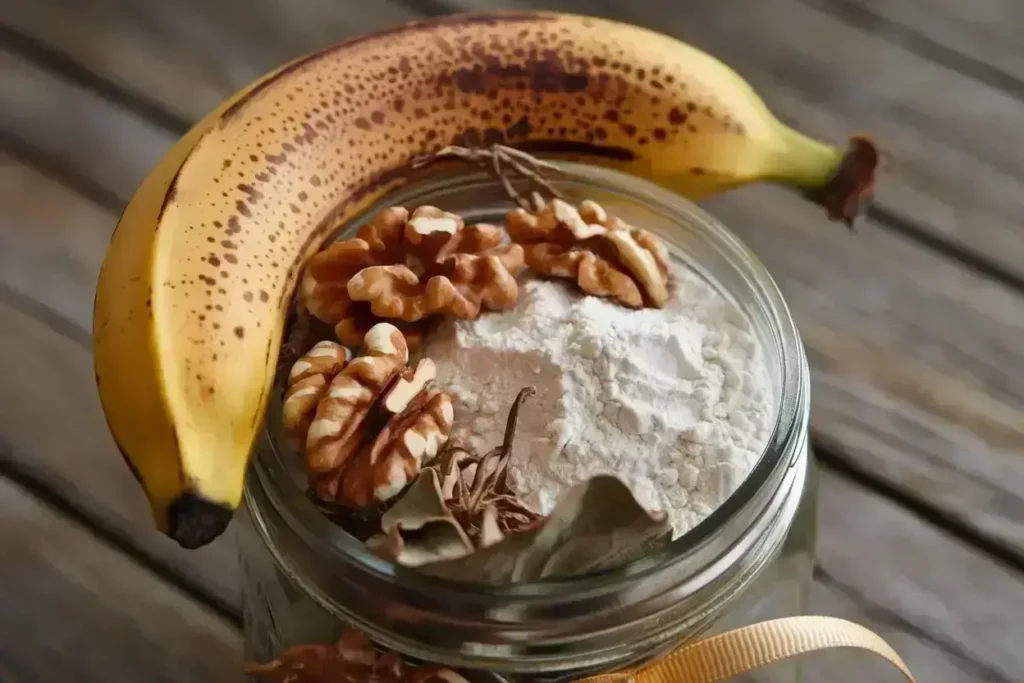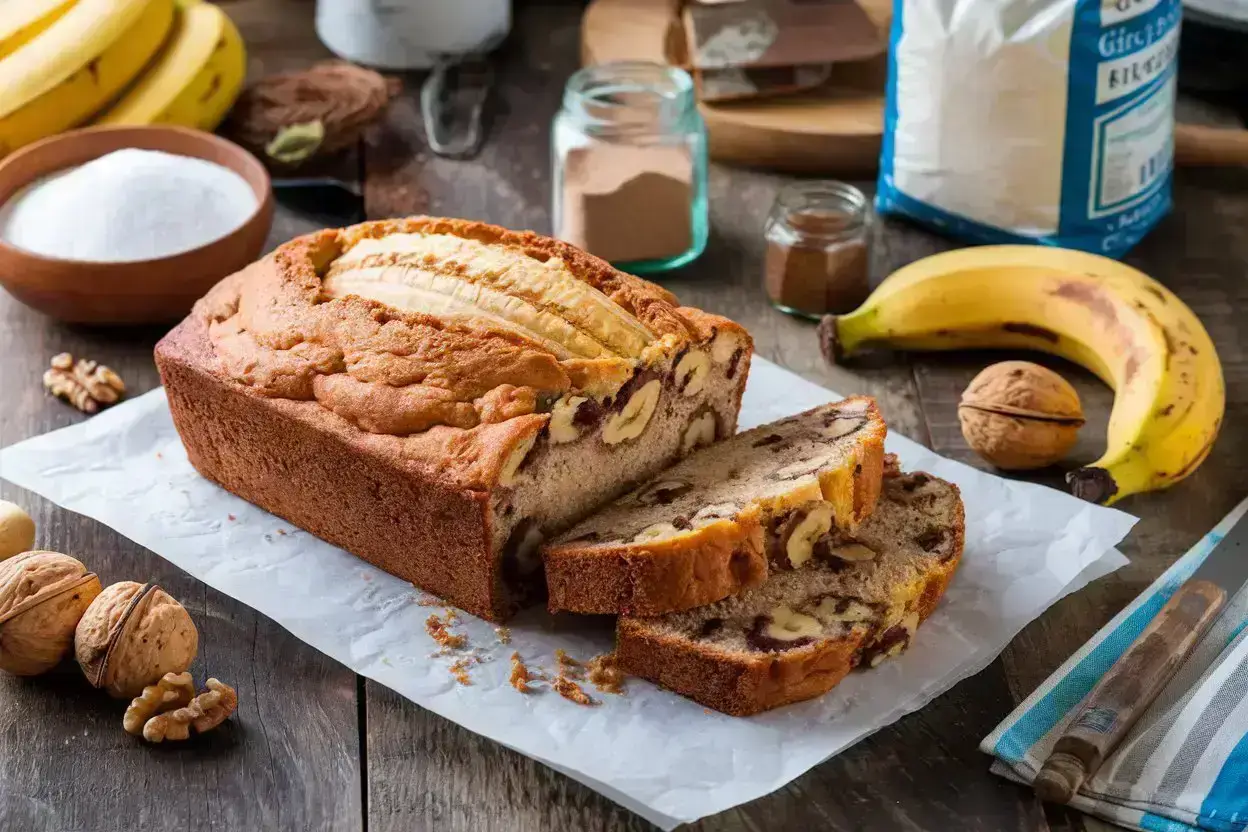Have you ever pulled a loaf of banana nut bread out of the oven, only to find that it’s way darker than you expected and asked yourself, “Why is my banana nut bread so dark?” While the taste might still be great, the overly browned or even dark crust can be frustrating and might leave you wondering what went wrong. Don’t worry—you’re not alone! Many home bakers face this exact problem, and the good news is, it’s often fixable. Let’s dive into the possible reasons behind the mystery of dark banana nut bread and explore some handy solutions to bring your baking game back to golden perfection.
Understanding the Problem
Common Baking Complaints
When it comes to banana nut bread, common complaints usually sound like this:
- “My bread looks burnt, but it tastes fine.”
- “The top is way too dark compared to the inside.”
- “It’s darker on the edges than in the center!”
Sound familiar? These issues are more common than you think, and they usually stem from a combination of factors like ingredients, oven settings, or baking techniques.
Why Color Matters in Banana Nut Bread
While the taste is the most important part of banana nut bread, let’s face it: we all eat with our eyes first. A loaf that’s too dark can give the impression of being overcooked or burnt, which might not exactly scream “delicious!” If you’re baking for guests or sharing your bread on social media, a perfectly golden loaf will definitely win more hearts.
Common Causes of Dark Banana Nut Bread
So, what’s causing your banana nut bread to turn out darker than you’d like? Here are the most common culprits:
Overripe Bananas: A Blessing or Curse?
Ripe bananas are a baker’s best friend. They’re soft, sweet, and packed with flavor. However, when bananas are overly ripe (think black, squishy ones), they have a higher sugar content. During baking, these sugars caramelize and can cause the bread to darken more than usual. It’s like roasting marshmallows—the more sugar, the faster it browns.
Sugar Content and Caramelization
Speaking of sugar, the type and amount you use in your recipe also play a big role. Brown sugar, for example, contains molasses, which can darken your bread more than white sugar. If your recipe leans heavily on sugar, it’s more likely to brown quickly in the oven.
“Sugar is the secret artist in your loaf, painting it golden—or dark!”
Oven Temperature: Too Hot to Handle
Your oven might not be as precise as you think. If it’s running hotter than the temperature you’ve set, your bread might brown (or even burn) faster than expected. Ovens often have hot spots, which can cause uneven baking, leaving some parts of your bread darker than others.
Incorrect Baking Time
Leaving your bread in the oven for just a few minutes too long can turn a golden loaf into a dark disaster. Recipes often provide a baking time range, but ovens vary, so keeping a close eye is key.
Type of Pan: Does It Matter?
Yes, it does! Darker pans absorb more heat, which can cause the bottom and sides of your bread to brown more quickly. Glass and ceramic pans, on the other hand, bake more evenly but might take longer.
Solutions for Perfect Banana Nut Bread
Once you’ve identified the cause of your dark banana nut bread, you can start making adjustments to achieve that perfect golden loaf.
“Your oven and ingredients are like dance partners—get them in sync for the perfect performance!”
Preventive Tips for Next-Time Success
Want to make sure your banana nut bread comes out perfectly golden next time? Here are some extra tips to keep in mind:
Tricks to Prevent Over-Browning
- Tent the bread with aluminum foil halfway through baking to shield the top from direct heat.
- Use the middle rack in your oven for more even heat distribution.
Storing Banana Nut Bread Properly
- Allow the bread to cool completely before storing it.
- Wrap it tightly in plastic wrap or store it in an airtight container to retain moisture and freshness.
Expert Baking Tips for Beginners
Baking banana nut bread might seem simple, but a few small tweaks can make all the difference between a good loaf and a great one. Here are some expert tips to ensure every loaf is golden, delicious, and picture-perfect.
How to Check Doneness Like a Pro
Ever taken your banana nut bread out of the oven only to find the middle is still raw? That’s a classic rookie mistake, but it’s easily avoidable. The key is to test for doneness properly:
- Toothpick Test: Insert a toothpick into the center of the bread. If it comes out clean or with just a few crumbs, it’s ready.
- Thermometer Check: For extra accuracy, use a kitchen thermometer. The internal temperature of fully baked banana nut bread should be around 200°F (93°C).
“Think of your loaf like a cake—it’s all about the perfect finish!”
Using Aluminum Foil to Protect Bread
If the top of your bread tends to get too dark while the inside is still baking, aluminum foil is your best friend. Midway through baking:
- Take a piece of foil and loosely tent it over the bread.
- This shields the top from direct heat while letting the inside bake through.
- Remove the foil in the last 5–10 minutes for a slight crisp on the top.
The Perfect Recipe to Try Today!
Sometimes, starting with the right recipe can solve half your problems. Try this fail-proof banana nut bread recipe:
Ingredients:
- 3 ripe bananas (mashed)
- 1/3 cup melted butter
- 1 cup granulated sugar
- 1 egg, beaten
- 1 teaspoon vanilla extract
- 1 teaspoon baking soda
- Pinch of salt
- 1 ½ cups all-purpose flour
- ½ cup chopped walnuts
Instructions:
- Preheat your oven to 350°F (175°C). Grease a loaf pan.
- In a large bowl, mix the mashed bananas and melted butter.
- Add the sugar, beaten egg, and vanilla extract. Stir well.
- Sprinkle in baking soda and salt, then mix in the flour. Fold in the chopped walnuts.
- Pour the batter into your prepared pan and bake for 60–65 minutes, checking for doneness after 55 minutes.
- Let the bread cool in the pan for 10 minutes before transferring it to a wire rack.
FAQ: Quick Answers to Common Questions
Sometimes, banana nut bread mysteries leave us scratching our heads. Let’s tackle some of the most common questions bakers have.
Can You Fix Dark Banana Nut Bread?
Yes! While you can’t un-darken a baked loaf, you can mask the issue. Try serving slices with a dusting of powdered sugar or a drizzle of glaze to balance out the color and sweetness.
How to Make Gluten-Free Banana Nut Bread?
Simply swap the all-purpose flour in your recipe for a high-quality gluten-free flour blend. Add a teaspoon of xanthan gum if the blend doesn’t already include it for better texture.
Is It Safe to Eat Overbrowned Bread?
Absolutely! As long as it’s not burnt to the point of bitterness, darker banana nut bread is still perfectly safe and delicious. The caramelized sugars may even give it a richer flavor.
Preventive Tips for Next-Time Success

The best way to bake flawless banana nut bread is to avoid common mistakes before they happen. Here’s how you can ensure success from the start.
Tricks to Prevent Over-Browning
- Always preheat your oven and use an oven thermometer to confirm the temperature.
- Bake your bread on the middle rack for the most even heat distribution.
- Check the bread 10 minutes before the suggested baking time ends to avoid overbaking.
Storing Banana Nut Bread Properly
- Store cooled bread in an airtight container at room temperature for up to 3 days.
- To freeze, wrap the loaf in plastic wrap, followed by a layer of foil. It’ll stay fresh in the freezer for up to 3 months.
Solutions for Advanced Baking Problems
If you’ve mastered the basics but still struggle with specific issues, these advanced solutions might help:
What to Do About Uneven Baking?
Rotate your pan halfway through baking to account for oven hot spots. Also, avoid overcrowding the oven with other items.
Can You Lighten a Dark Crust?
Unfortunately, you can’t undo the darkness, but you can prevent it in the future. Using lighter-colored pans and reducing oven temperature are the best fixes.
“Remember, every loaf is a learning opportunity. Your next one will be even better!”
Troubleshooting Specific Baking Issues
Even the most experienced bakers encounter problems now and then. If you’re still struggling with certain aspects of banana nut bread, here are some specific issues and their solutions.
Why Is My Banana Nut Bread Too Dense?
A dense loaf is often caused by overmixing the batter or not using enough leavening agents. Here’s how to fix it:
- Mix Gently: Stir the ingredients just until combined. Overmixing develops gluten, leading to a dense texture.
- Check Your Baking Soda: Make sure your baking soda is fresh and properly measured. Too little won’t provide enough lift.
- Avoid Overloading with Bananas: Too much banana can weigh the bread down. Stick to the recommended amount in your recipe.
Why Does My Banana Nut Bread Sink in the Middle?
If your loaf sinks, it’s often due to underbaking or too much liquid in the batter. To prevent this:
- Bake Thoroughly: Always check doneness with a toothpick or thermometer before removing the bread from the oven.
- Measure Ingredients Accurately: Use a kitchen scale for precise measurements, especially for wet ingredients like bananas.
Why Does My Banana Nut Bread Taste Bitter?
Bitterness can come from old or improperly measured baking soda or baking powder. Make sure these ingredients are fresh and use the exact quantities called for in the recipe.
Fun Variations to Try
Banana nut bread is a classic, but who says you can’t get creative? Here are some fun twists on the traditional recipe that will keep things exciting:
Chocolate Chip Banana Nut Bread
Add ½ to 1 cup of chocolate chips to your batter for a touch of sweetness. The chocolate pairs beautifully with the nutty banana flavor.
Blueberry Banana Nut Bread
Fold in a cup of fresh or frozen blueberries for a fruity twist. Blueberries add a burst of juiciness to every bite.
Vegan Banana Nut Bread
Replace the egg with a flaxseed egg (1 tablespoon ground flaxseed + 3 tablespoons water) and use coconut oil instead of butter. You’ll still get a moist and flavorful loaf.
Gluten-Free Banana Nut Bread
Substitute all-purpose flour with a gluten-free blend and follow the same recipe. Adding a teaspoon of xanthan gum can help with texture if your blend doesn’t already include it.
Spiced Banana Nut Bread
Kick up the flavor by adding spices like cinnamon, nutmeg, or even a dash of cardamom to your batter. These warm spices complement the sweetness of the bananas.
Creative Ways to Enjoy Banana Nut Bread
Once your banana nut bread is baked to perfection, the fun doesn’t stop there! Here are some creative and delicious ways to enjoy it:
Toasted with Butter or Nut Butter
Slice your banana nut bread, toast it lightly, and spread a layer of butter, almond butter, or peanut butter on top. The warm, nutty flavors are irresistible.
French Toast Banana Nut Bread
Transform your banana nut bread into a decadent breakfast treat. Dip slices into an egg mixture (like you would for French toast), then fry them until golden brown. Serve with syrup and fresh fruit.
Banana Nut Bread Ice Cream Sandwiches
Pair two thin slices of banana nut bread with a scoop of vanilla or caramel ice cream in between. Freeze for a refreshing dessert.
Layered Banana Nut Bread Trifle
Cut the bread into cubes and layer it in a glass with whipped cream, pudding, and fresh fruit for a show-stopping dessert.
“A loaf of banana nut bread is like a blank canvas—get creative and make it uniquely yours!”
Explore More Banana Bread Tips and Variations
If you’re passionate about baking, perfecting your banana nut bread is just the beginning! Whether you’re curious about the number one mistake made when making banana bread or wondering when not to use bananas for bread, understanding these key details can elevate your baking skills. For those who love experimenting with flavors, why not try this delightful variation—banana pecan bread? It’s a nutty, flavorful twist on the classic banana bread recipe that will impress your family and friends! Happy baking!
Conclusion
Mastering banana nut bread takes patience, practice, and a little bit of experimentation. Whether you’re troubleshooting dark loaves, trying out new variations, or discovering fun ways to enjoy it, the journey is all part of the experience. Remember, baking is as much about the process as it is about the final result.
So the next time someone asks, “Why is my banana nut bread so dark?” you’ll not only have the answers but also the skills to bake a loaf that’s golden, delicious, and undeniably perfect.
Now it’s your turn! Try these tips, have fun experimenting with variations, and enjoy every bite of your banana nut bread masterpiece.

